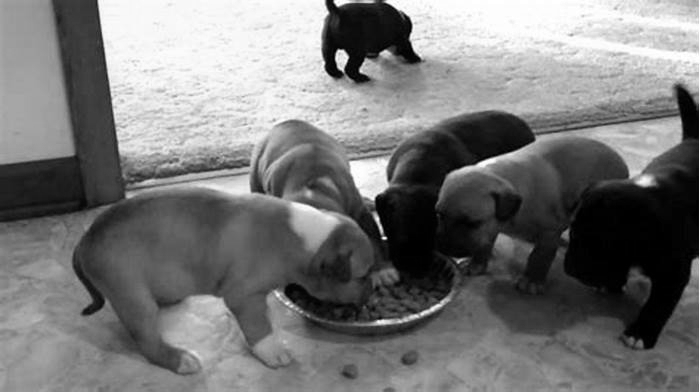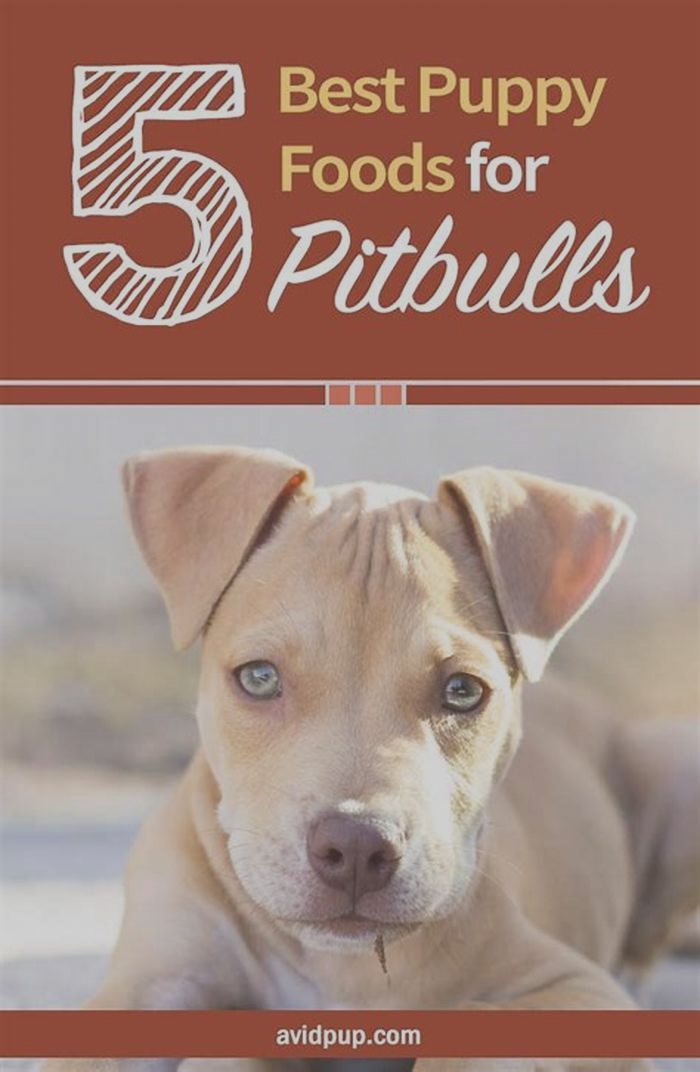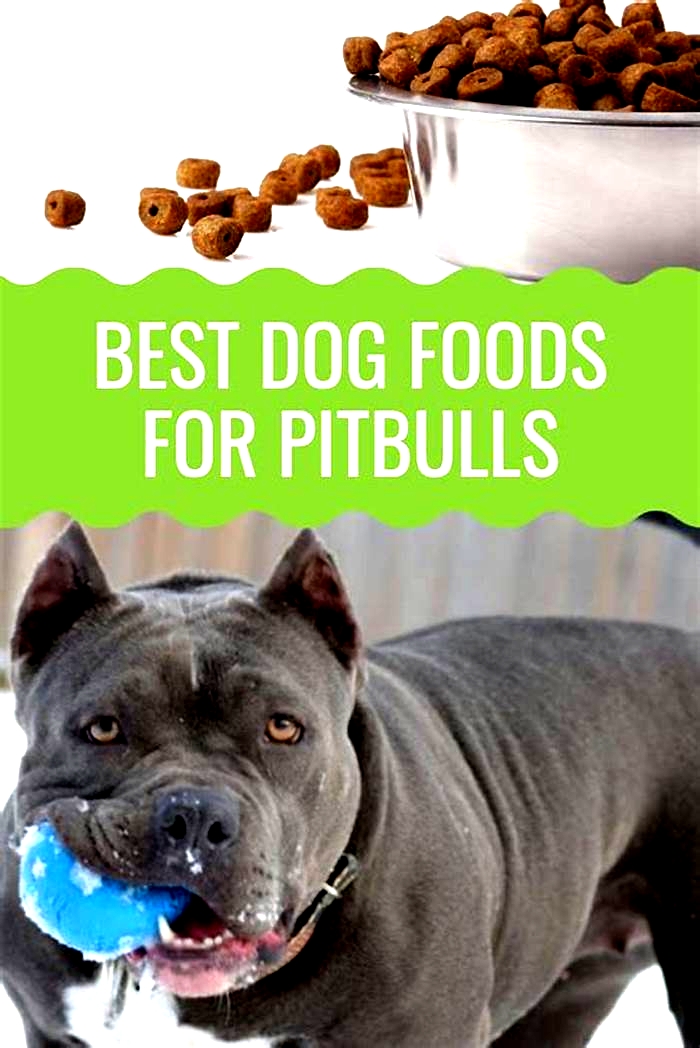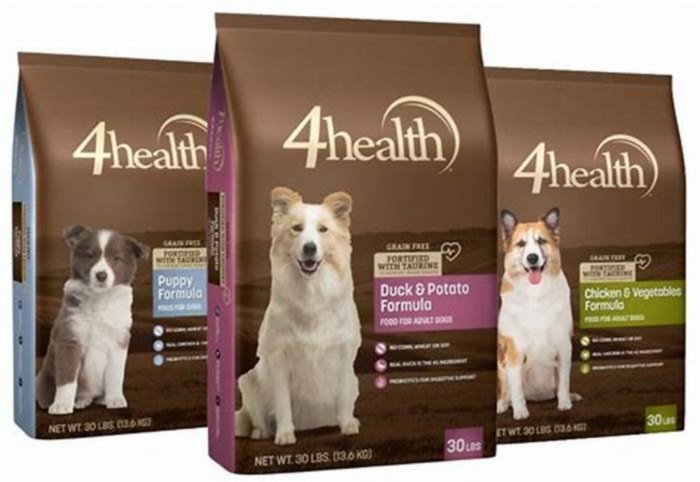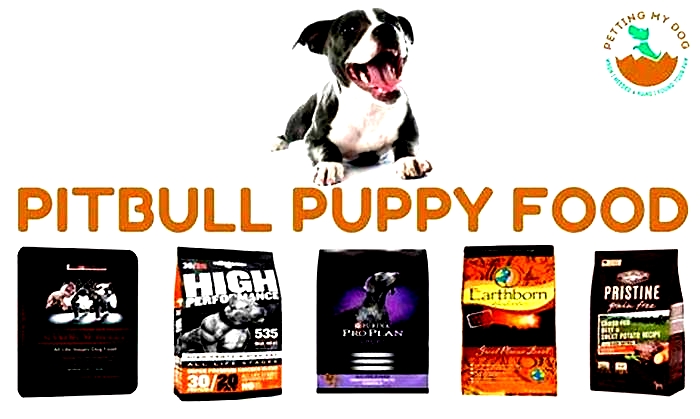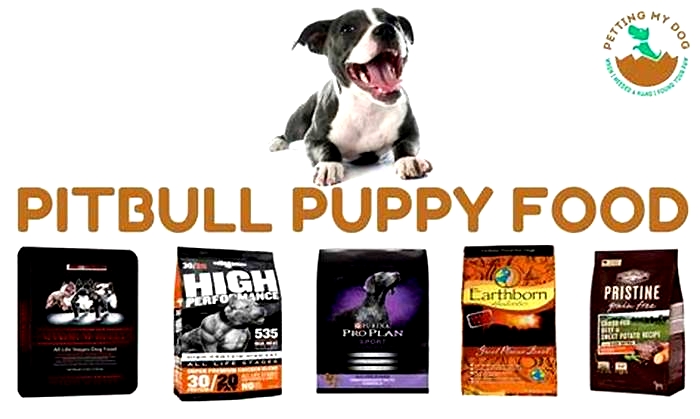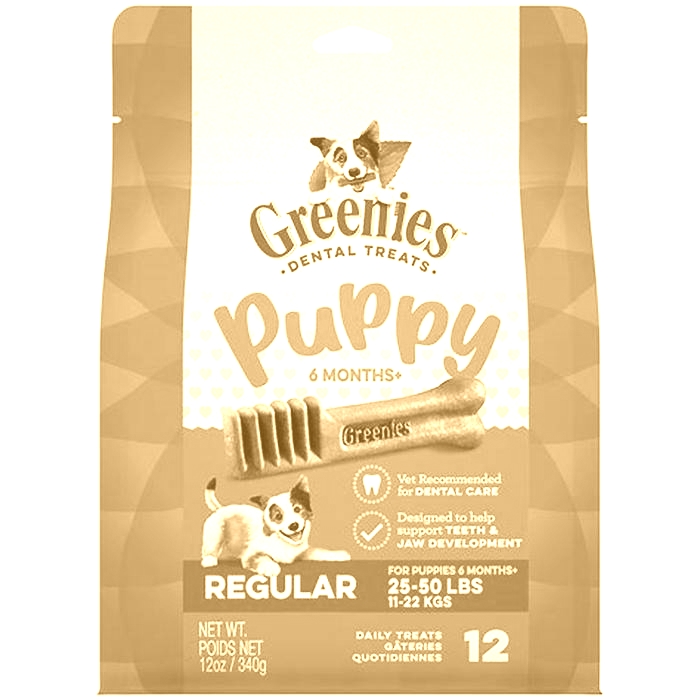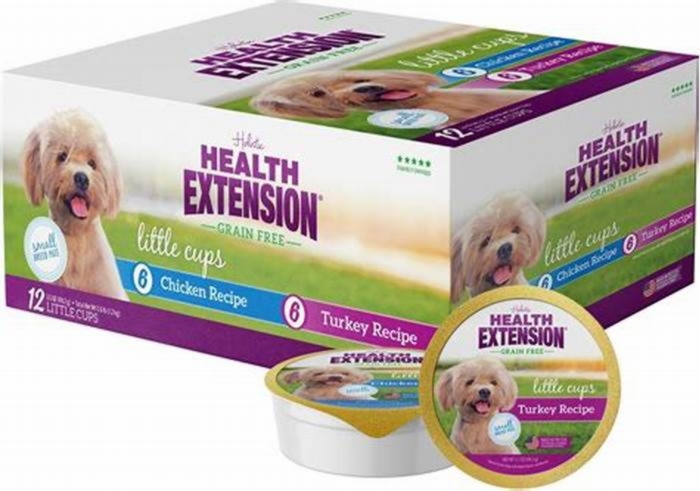best puppy food for 6 week old pitbull
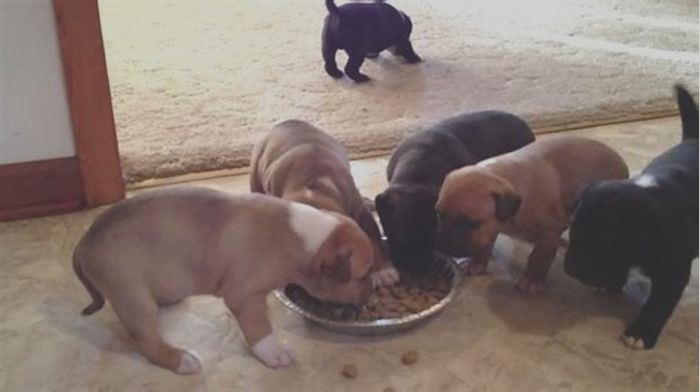
Feeding a Pitbull Puppy: Schedules, Routines and Quantities
Feeding a Pitbull puppy starts with finding a commercial or homemade diet that contains all the right nutrition for their life stages. Changes need to be made gradually, and the number of meals each day needs to reflect their age. The result is a diet that supports healthy growth, and avoids those dreaded allergies and sensitive tummy. Today Ill share the best puppy foods for Pitbulls, the ideal amount of daily feedings, how much to feed and more.
Contents
Swapping Puppy Food Brands
First things first. When you bring your Pitbull puppy home, make sure that you know exactly what the breeder (or shelter) was feeding her. Keep on feeding your pup that very same thing for at least two weeks. This will give your puppy time to get settled into her new home. Then, when you want to transition to your new chosen puppy food, start slowly.
Mix in 10 percent of the new food with 90 percent of the old food on day one. Then increase the new food slowly over the course of at least a week. The slow food change will prevent your pups stomach from getting upset.
Another good thing you can do for your Pitbull puppys digestion is adding probiotics to the food once daily.
Pitbull Puppy Diets
Growing puppies need food with at least 22.5 percent of high-quality protein (based on dry matter). The amino acid profile (how the proteins are put together) matters too, as do other nutrients such as calcium, phosphorus or magnesium.
Even the ratios can play a rolefor example, aim for a calcium to phosphorus ratio between 1:1 and 2:1.
More is not always better, though.
Too much protein and too many bone building blocks can cause your puppy to grow too quickly and develop joint problems later in life.
Avoid overfeeding your pooch, and youll be just fine.
How Often To Feed Your Puppy
Baby Pitbulls have a fast metabolism, which then slows down as they grow up. The older your puppy gets, the fewer calories she requires per pound of body weight. As your puppy grows, she can also go longer without food, so you can get by with fewer feedings. Heres a general rule of thumb for the amount of daily feedings required:
- Younger than four months: Four meals daily
- Between four and six months: Three meals daily
- Over six months: Two to three meals daily
What to Feed a Pitbull Puppy
You can choose a commercial dog food (kibble, wet food, or both) or you can prepare your puppys meals yourself (either cooked or raw). If you go with the latter, it will be your own responsibility to put together a complete and well-balanced meal plan.
Pitbull puppies might sometimes have a sensitive stomach and have a high incidence of food-related allergies that manifest as skin problems. They might react to certain ingredients, so searching for the food your Pitbull puppy thrives on can require a bit of experimentation.
Feeding a Pitbull Puppy Kibble
Kibble is the most convenient dog food. Its easy to store, can be used as treats or fed on the go, and it comes in all sorts of different flavors.
Its worth spending a bit more for an all-natural brand with premium ingredients. Studies have shown that more expensive kibble is often more easily digestible.
Try to avoid ingredients like corn, soy, wheat, and fructose or glucose syrups. And lets not forget the most important thing. To make sure your puppy has all the nutrients it needs to grow up healthy, choose a kibble designed specifically for medium-sized puppies to large breeds.
Feeding a Puppy Wet Food
Wet food is also a commercial type of dog food. The difference from kibble is that wet food contains about 75 percent water. The moisture unfolds all the aromas in the food, making wet food extremely palatable for most dogs. The downside of the moisture is that wet food spoils more easily.
Additionally, there is no mechanical abrasion of your puppys teeth, so there is no teeth-cleaning effect as there is when feeding kibble. Many dogs have loose stools when fed wet food in large amounts.
Feeding a Puppy Raw
The biologically appropriate raw foods (BARF) takes a different approach: It tries to mimic what your dogs wild ancestors eat. These diets contain mostly raw meats, bones, and some vegetables and fruits.
Supporters of raw feeding claim that it makes their dogs healthier and the coat shiny. The veterinary community is still rather divided on this subject. Studies havent been able to conclusively prove that raw feeding is better than commercial diets. They havent been able to refute it either, though.
Planning a BARF Diet
We suggest working closely with an experienced vet or canine nutritionist to put together a complete and well-balanced meal plan.
Theres a stubborn myth out there that raw feeding makes dogs more likely to bite, as its said to bring out their wild side.
In a breed like the Pitbullthat already has an unwarranted bad reputation, and certainly a dangerous bitethis is often used as a key argument against raw feeding. We can put your mind at easy, though. This theory has absolutely no scientific truth to it. Your dog will not become blood-thirsty because of a BARF diet.
Anecdotally, though, some dogs are more defensive of their food bowl on a raw diet. Its certainly a good idea to keep children away from your puppys food bowl at meal times, anyway.
One last important thing to pay attention to when feeding a raw diet is hygiene. We cant stress this enough, as raw meat is frequently contaminated with harmful bacteria and parasites.
Feeding a Puppy a Homemade Diet
What about feeding your dog home-cooked meals? If raw feeding isnt for you, cooking for your pup can be an option. Also consider this if there are immuno-compromised individuals or small children in your household that are in danger of meat-borne pathogen infections.
Just as with raw diets, ensure your puppy is getting all the necessary nutrients in the right ratios and amounts.
Is My Puppy the Right Weight?
Weighing your Pitbull pup regularlyat least once a weekis very important.
Additionally, its a good idea to keep an eye on your puppys body condition score.
The body condition score is a hands-on way to determine how much fluff is on your puppy.
Watching the weight development and the body condition score, you can react early if your puppys growth comes to a halt.
What happens if your puppy is too skinny?
Being underweight can interfere with your pups healthy growth.
Also, there might be an underlying reason why your pooch is not gaining weight like she should.
If your puppy is too skinny despite eating a hearty appetite, have your veterinarian check for parasites.
You might think being a bit too fluffy wont harm your Pitbull puppy.
But being overweight during the growth period can put a lot of stress on the bones and joints of your Pitbull.
Its never too early for good weight control.
My Puppy Is Still Hungry
What if your puppy is always begging for food?
First off, make sure your pup is not underweight and is getting the right amount of calories.
When thats settled, and your pooch is still hungry, try distributing the total daily food portion onto more feedings throughout the day.
If that still doesnt help, you could try some treats in between meals. But make your puppy work for them.
Kibble is very handy to use for puppy training. It can also be filled into food balls or dog puzzles to exercise your puppys developing brain.
Its not advisable to just give your puppy treats whenever she is begging.
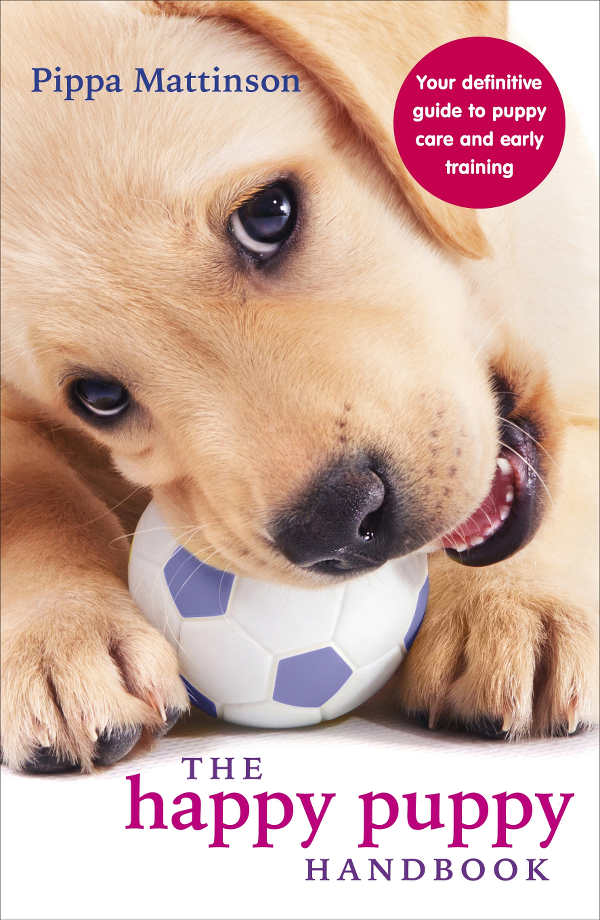 (paid link)
(paid link) This teaches your pup really quickly that the begging eyes work, and you wont get another quiet minute.
My Puppy Wont Eat
Its normal to get worried if your puppy refuses a meal.
However, this can happen occasionally.
Maybe your pup is just too overwhelmed from learning, playing and all the new experiences to get hungry.
If its just one meal that your pup skips, no need to fret.
Should your Pitbull pup miss more than two mealsor go without food for more than 12 hoursit might be a cause for concern.
Check if your puppy has any other symptoms, such as:
- Vomiting
- Diarrhea
- Unusual tiredness
- Salivation
Then, give your vet a call to discuss whether an emergency visit is warranted.
How Long Is a Pitbull Considered a Puppy?
Your Pitbull puppy is expected to reach her adult weight at around 13 or 14 months of age. At this stage, its time to switch to a food for adult dogs. Your pooch no longer needs the higher protein amount provided in puppy foods.
If youre feeding your dog a homemade or raw diet, recalculate nutrients and portion sizes accordingly. If your Pitbull is getting a commercial diet, all youll have to do is switch to an adult type of dog food. Ideally, stick with the same brand.
Mix the new and old food together, slowly increasing the amount of the adult dog food over the course of one week.
How Often Should I Feed My 6 Week Old Pitbull Puppy: Expert Advice
Feed your 6-week-old Pitbull puppy three to four times a day. A 6-week-old Pitbull puppy requires a balanced and nutritious diet to support healthy growth and development.
Proper feeding is crucial during this stage to ensure optimal health. We will discuss the recommended feeding frequency and portion size for a 6-week-old Pitbull puppy. By following these guidelines, you can provide your puppy with the necessary nutrients they need for a strong start in life.
We will also provide some tips and considerations to help you establish a consistent feeding routine that meets your puppys needs. Remember, a well-fed puppy is a happy and healthy puppy. So, lets dive in and learn how often you should feed your 6-week-old Pitbull puppy.
Understanding The Nutritional Needs Of A 6 Week Old Pitbull Puppy
Feeding a 6-week-old Pitbull puppy requires attention to its nutritional needs. The first few months of a puppys life are crucial for healthy development. Providing the right nutrients is vital for their growth and overall well-being. Pitbull puppies have specific requirements that differ from adult dogs.
High-quality puppy food is essential for their proper nourishment. It should contain the right balance of protein, fats, and carbohydrates. These key nutrients contribute to their muscle development, cognitive function, and energy levels. Additionally, vitamins and minerals play a significant role in supporting their immune system.
Feeding your Pitbull puppy small, frequent meals throughout the day helps maintain their energy levels and prevent hypoglycemia. Regularly consulting with your veterinarian will ensure that you are providing the best nutrition for your 6-week-old Pitbull puppy.
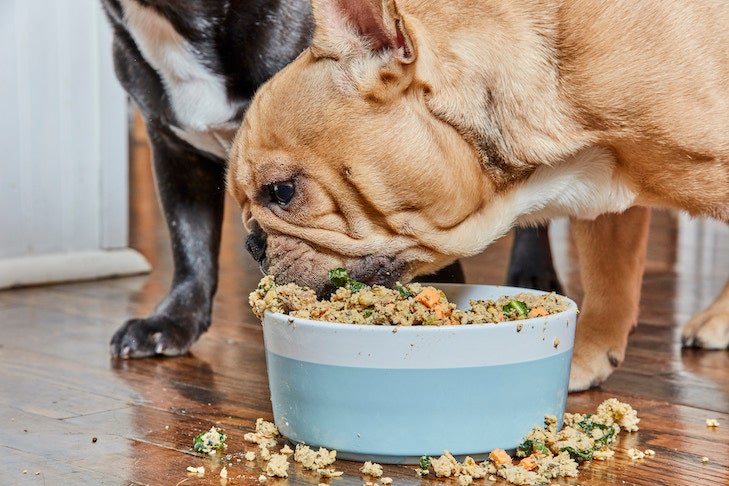
Credit: www.akc.org
Creating A Feeding Schedule For Your 6 Week Old Pitbull Puppy
Feeding a 6-week-old Pitbull puppy requires a well-planned schedule. To determine the appropriate amount of food, consider the puppys age and weight for optimal growth. Divide daily meals into frequent intervals to meet their nutritional needs. Puppies at this age need to eat more frequently, generally about 4-5 times a day.
Start by providing small portions and gradually increase the amount as the puppy grows. Its important to monitor their weight and adjust the portions accordingly. A recommended feeding schedule could be breakfast, lunch, dinner, and two additional small meals in between.
Consulting with a veterinarian can also provide valuable guidance in creating a feeding schedule that ensures your puppy is healthy and happy.
Addressing Common Concerns And Challenges In Feeding A 6 Week Old Pitbull Puppy
Feeding a 6-week-old Pitbull puppy can come with its fair share of concerns and challenges. A common concern is how often to feed them. With picky eaters, its important to find a balance where their nutritional needs are met. If your puppy has dietary allergies or sensitivities, consult a veterinarian for guidance on appropriate food choices.
Additionally, incorporating treats into their feeding routine can be tricky. Its important not to overfeed them, so be mindful of portion sizes. Remember, consistency is key when it comes to feeding your Pitbull puppy. By addressing these common concerns and challenges, you can ensure your furry friend gets the nutrition they need to grow healthy and strong.
Monitoring The Weight And Growth Of Your 6 Week Old Pitbull Puppy
The weight and growth of your 6-week-old Pitbull puppy should be monitored closely. Regular weigh-ins and tracking growth milestones are essential to ensure youre providing the right amount of food. Overfeeding can lead to weight problems, while underfeeding can result in stunted growth and poor development.
Consulting with a veterinarian can provide guidance on the appropriate growth patterns for your puppy. They can help you determine the ideal feeding frequency and portion sizes based on their size, breed, and overall health. By monitoring their weight and growth consistently, you can make necessary adjustments to their diet and prevent any potential issues down the line.
Keep a close eye on your puppys development to ensure they are growing and thriving as they should.
Ensuring Healthy Eating Habits And Mealtime Etiquette For Your 6 Week Old Pitbull Puppy
Feeding your 6-week-old Pitbull puppy requires establishing a designated feeding area and routine. This helps them form healthy eating habits and mealtime etiquette. To prevent food aggression and resource guarding, techniques such as controlled feeding and separating food bowls may be implemented.
Promoting slow and controlled eating habits is important to avoid bloating or digestive issues. Feeding your puppy small and frequent meals throughout the day is ideal, rather than large meals. Providing a balanced diet specific to their breeds nutritional needs is essential.
It is important to monitor their growth and consult with a veterinarian to ensure they are receiving adequate nutrition. By implementing these strategies, you can ensure your Pitbull puppy develops healthy eating habits and grows into a strong, healthy adult.
Transitioning To Solid Foods For Your 6 Week Old Pitbull Puppy
Transitioning your 6-week-old Pitbull puppy to solid food should be done gradually. Introduce solid food slowly to avoid any digestive upset. It is crucial to choose the right puppy food specifically formulated for Pitbulls. Monitor and adjust the feeding routine during this transition period to ensure your puppys nutritional needs are met.
Start by mixing a small amount of solid food with your puppys current diet and gradually increase the proportion over time. This helps your puppys digestive system adjust to the new food. Pay attention to any signs of discomfort or allergies and consult your veterinarian if needed.
Remember, a gradual transition is key to maintaining your puppys well-being during this important stage of development.
Seeking Expert Advice On Feeding Your 6 Week Old Pitbull Puppy
Feeding your 6 week old Pitbull puppy requires expert advice. Consulting a veterinarian is crucial for personalized guidance. Seek recommendations from experienced breeders or trainers. Regular check-ups are important to ensure your puppys nutritional needs are met. Keep a close eye on weight, growth, and overall health.
Adjust feeding frequency based on your vets recommendations. Provide a balanced and nutritious diet to support your puppys development. Remember to follow a consistent feeding schedule and monitor their food intake. Seek professional help to ensure your Pitbull puppy receives the best care possible.
Conclusion
Feeding a 6-week-old Pitbull puppy is an important responsibility that should not be taken lightly. As a pet owner, its crucial to provide proper nutrition to support their growth and development. The frequency of feeding plays a significant role in ensuring your puppys well-being.
It is recommended to feed your 6-week-old Pitbull puppy three to four times a day to meet their nutritional needs, ensuring they receive adequate sustenance and energy. Adjusting portion sizes and meal frequency as they grow older is also essential.
Along with a balanced diet, providing fresh water and monitoring their eating habits is crucial. Always consult your veterinarian for specific dietary recommendations that best suit your puppys unique needs. By establishing a regular feeding routine and providing quality nutrition, you are setting your Pitbull puppy up for a healthy and happy life.

